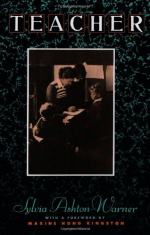
|
| Name: _________________________ | Period: ___________________ |
This test consists of 5 multiple choice questions, 5 short answer questions, and 10 short essay questions.
Multiple Choice Questions
1. What did Brian mean by the term he used to describe the bus in his story?
(a) Falling apart.
(b) Rackety.
(c) Huge.
(d) Worn-out.
2. In what country did the volunteer describe teaching villagers how to read and write their own names?
(a) Libya.
(b) Egypt.
(c) Morocco.
(d) Algeria.
3. According to Erich Fromm, what is the outcome of the unlived life?
(a) Destructiveness.
(b) Depression.
(c) Suicide.
(d) Substance abuse.
4. What poet is quoted at the beginning of "Tone"?
(a) e.e. cummings.
(b) W.B. Yeats.
(c) Emerson.
(d) T.S. Eliot.
5. How long were most of the "stories" written by the students at the beginning of school?
(a) Two sentences.
(b) Two or three words.
(c) One sentence.
(d) One paragraph.
Short Answer Questions
1. What did the students do if they ran out of time to write their stories in the allotted time?
2. To what artist did Ashton-Warner refer to in "Workbook"?
3. How many Maori transitional readers did Ashton-Warner end up with?
4. What was the most powerful word under the "fear" category?
5. Why did Ashton-Warner object to the use of terms such as "do not" in early readers?
Short Essay Questions
1. Why was teaching the class so back-breaking, according to Ashton-Warner?
2. Why were "key words" so essential to learning to read?
3. How did the Maori early readers provide a bridge to eventual reading of European material?
4. What was the role of handwriting in the Maori students' stories?
5. Into what two main categories did Ashton-Warner place many of her students' first words?
6. Why was the class so noisy while the children studied their individual key words and what did that noise signify?
7. Why did Ashton-Warner describe children's minds as volcanoes and how did that affect her teaching?
8. How did the students perform when they did expressive dancing versus when they learned specific moves?
9. What did Plato believe about dance?
10. Why did Ashton-Warner describe the language of published first readers as "dead"?
|
This section contains 860 words (approx. 3 pages at 300 words per page) |

|




